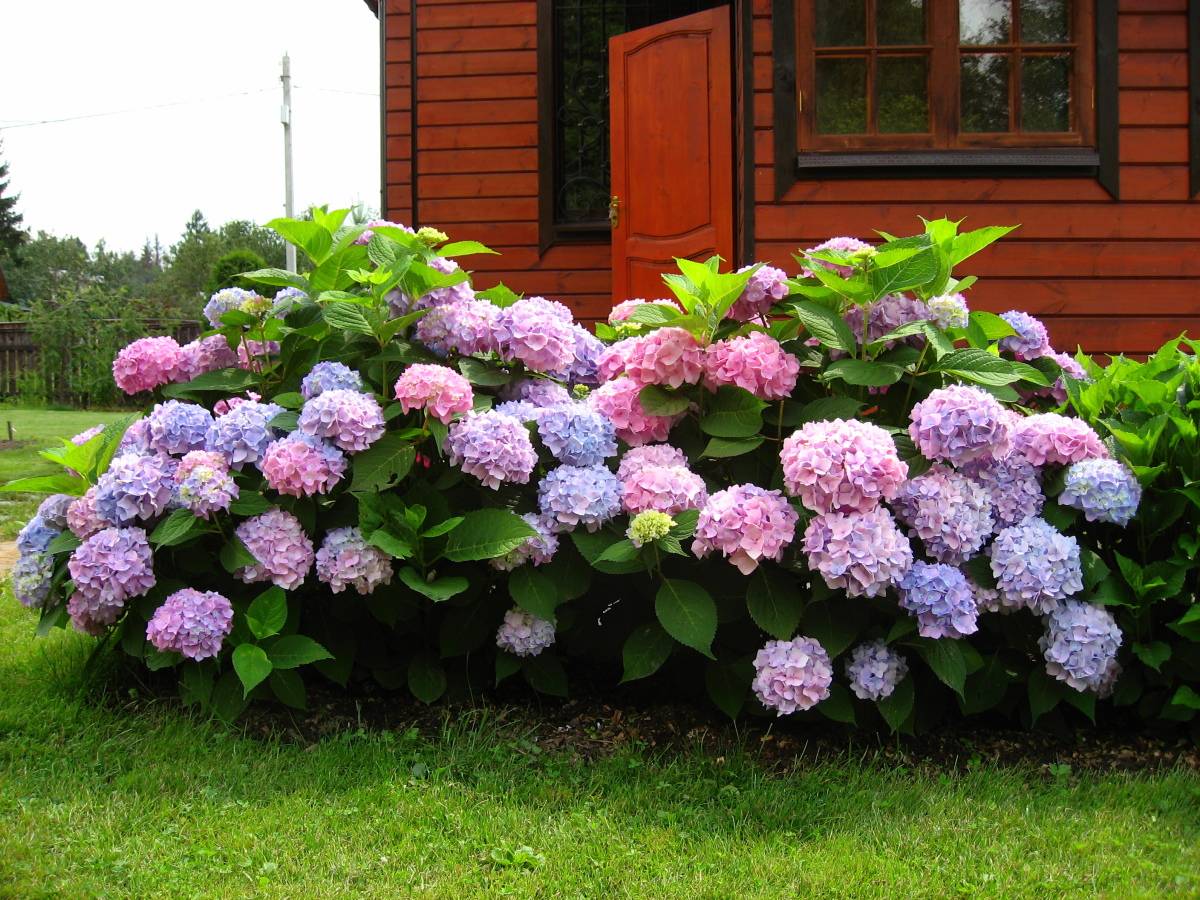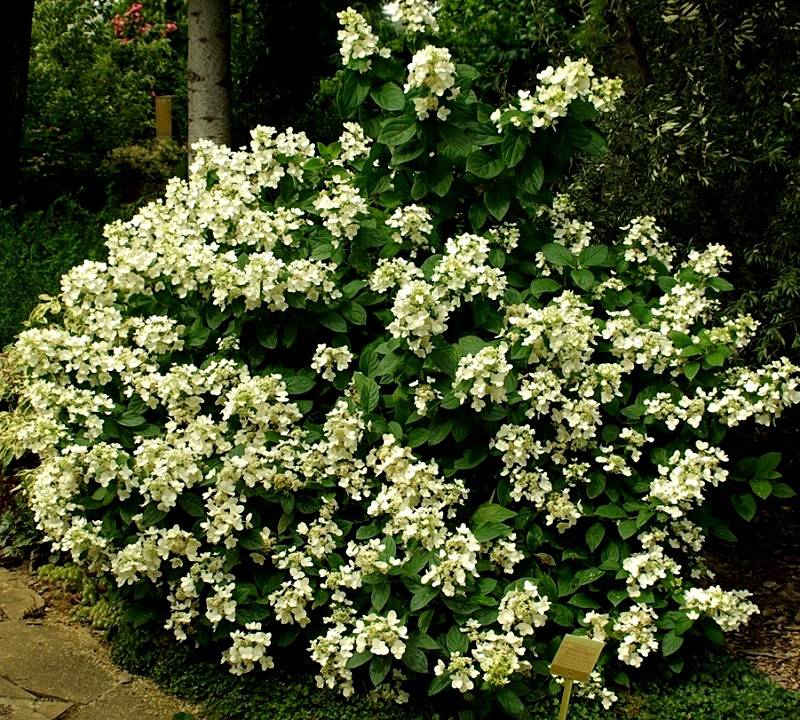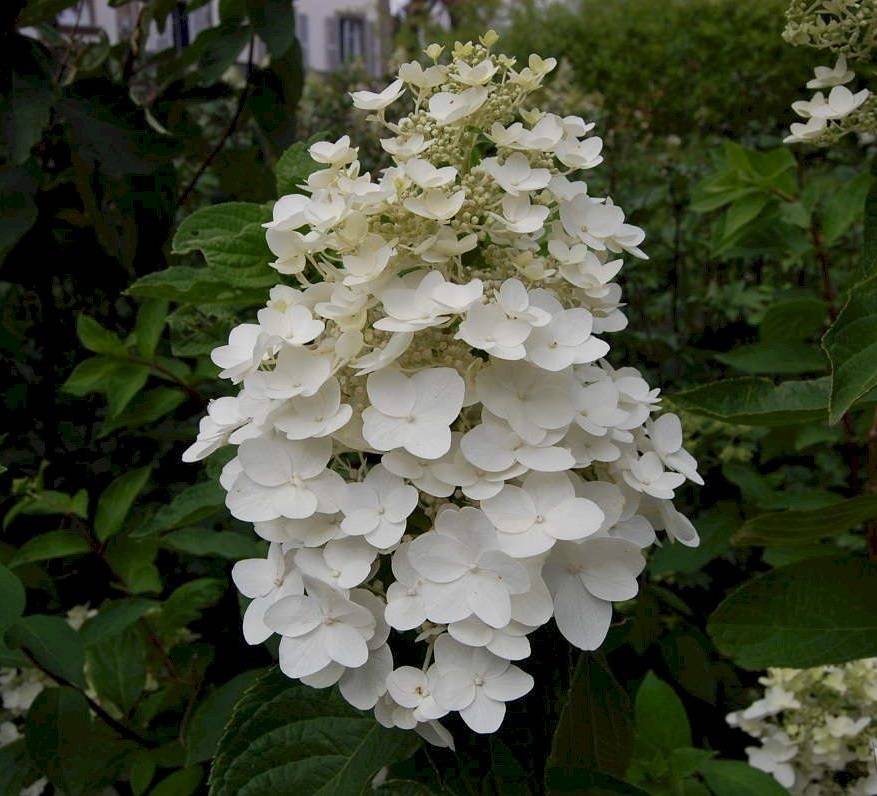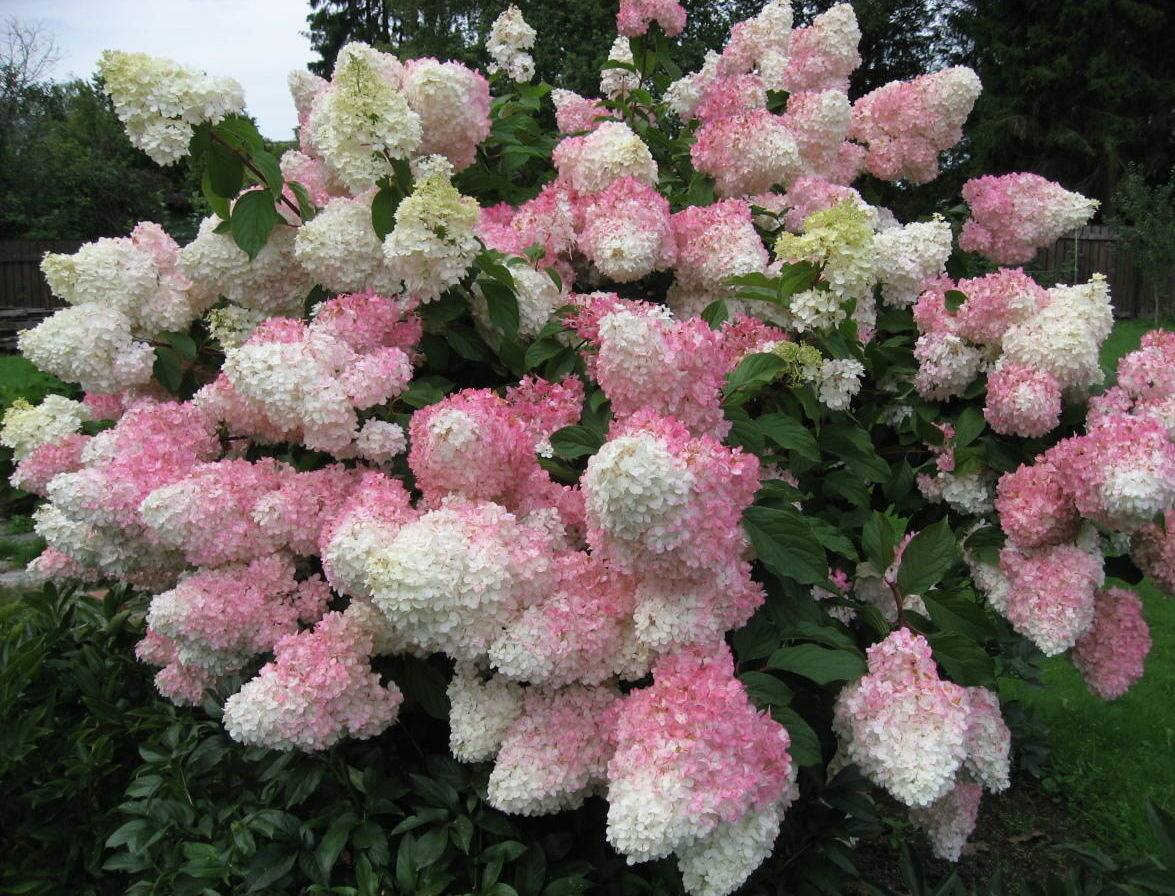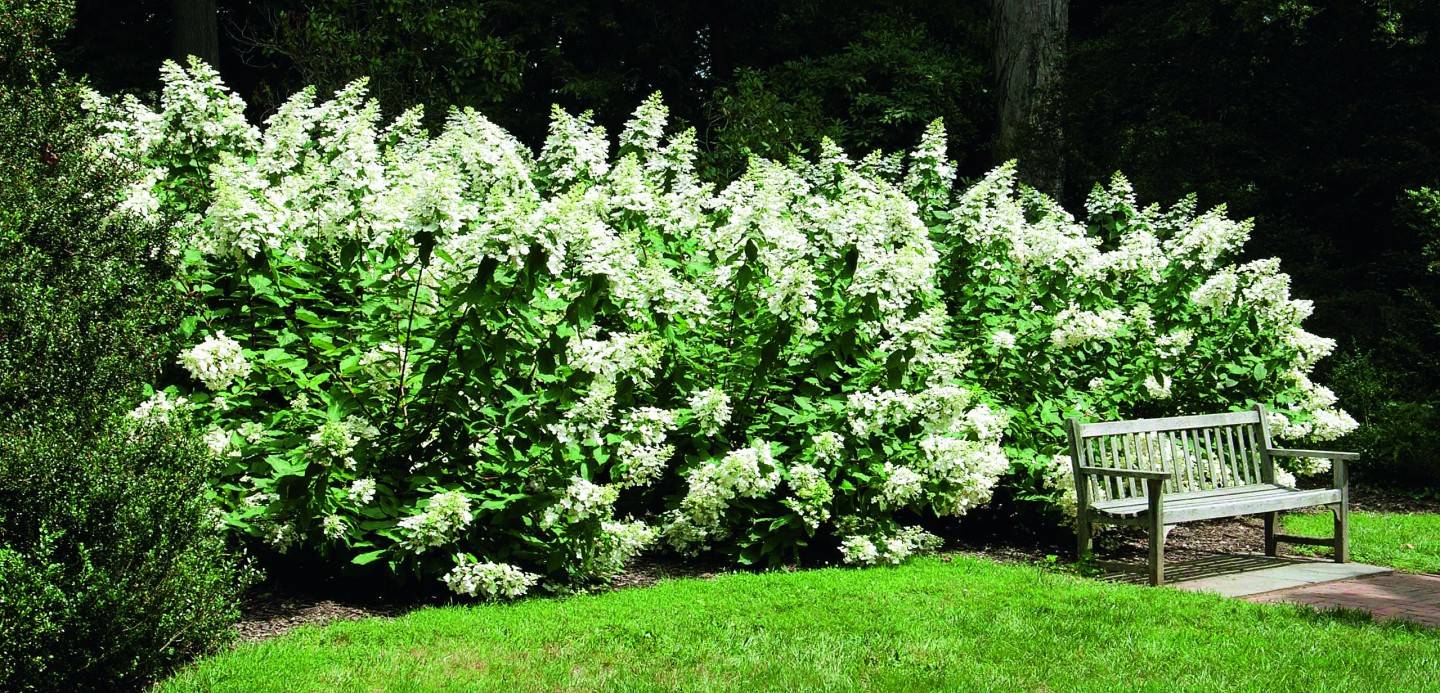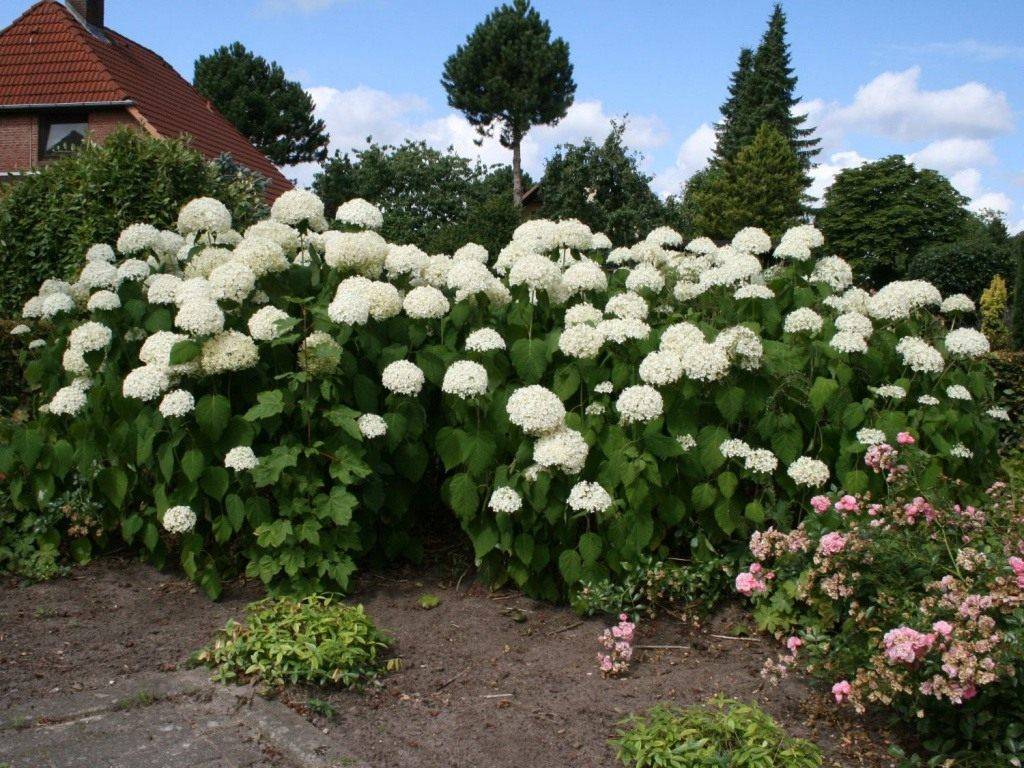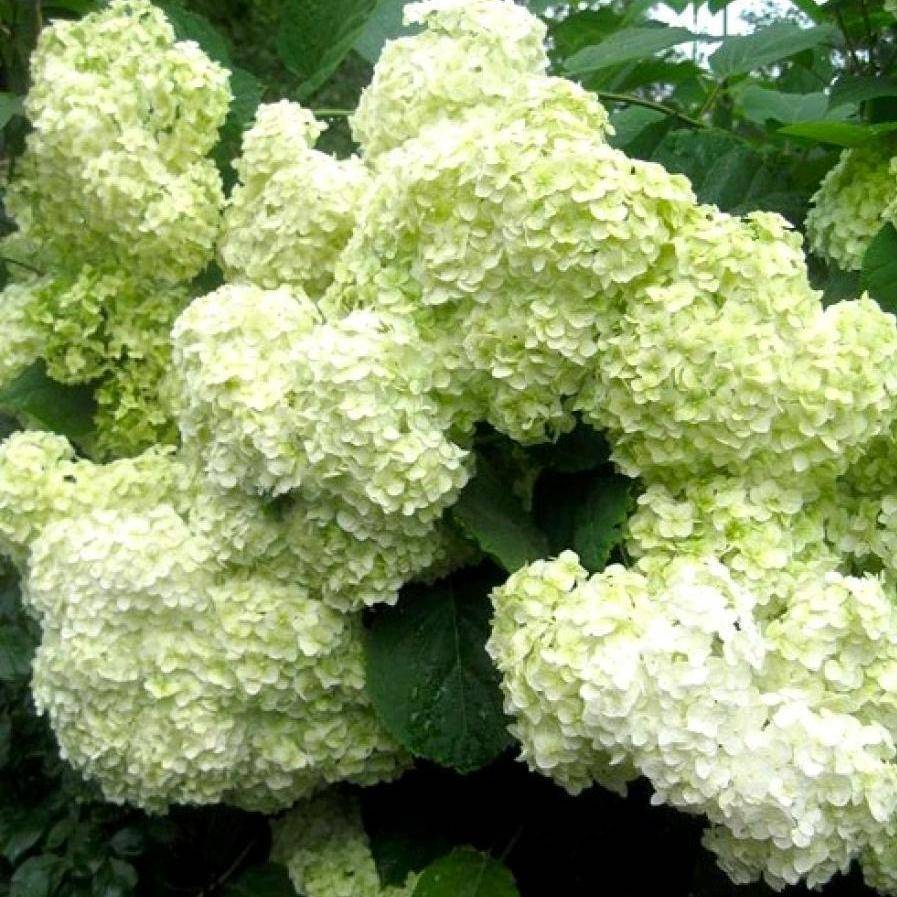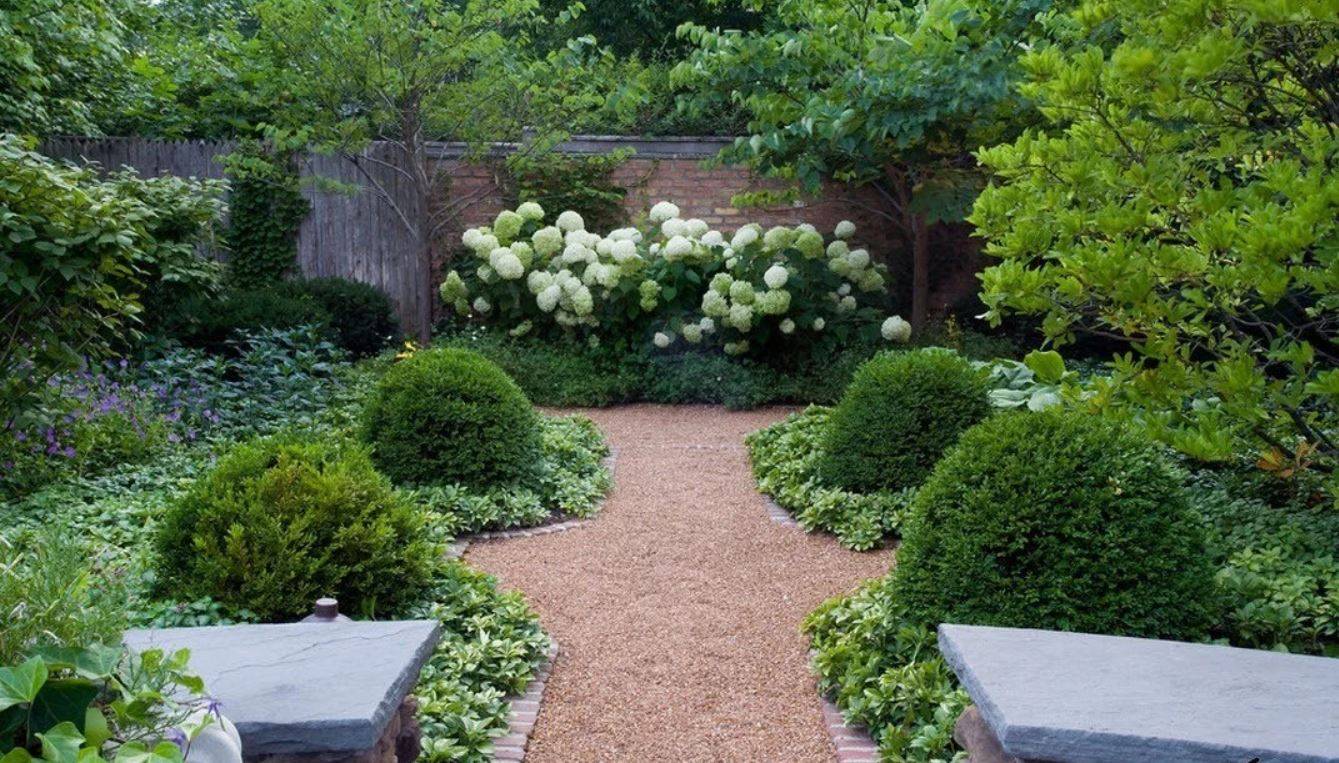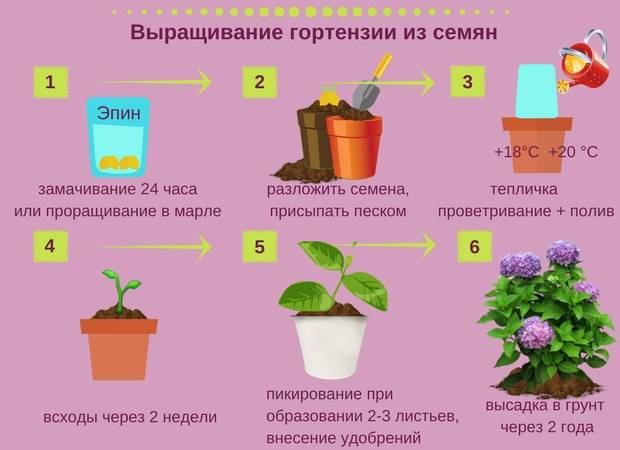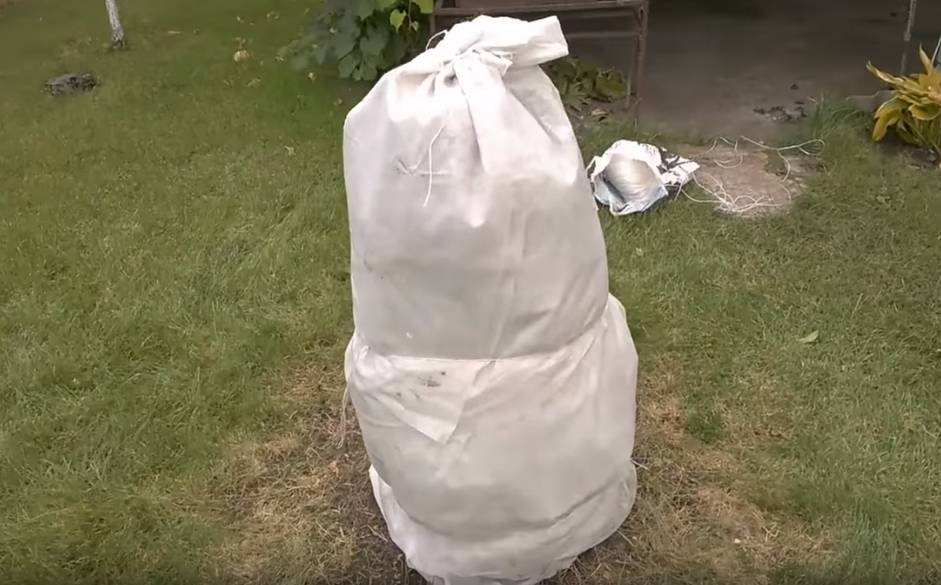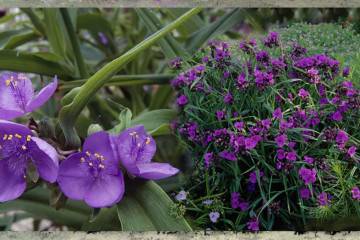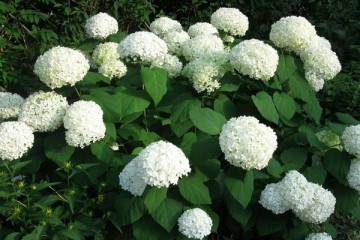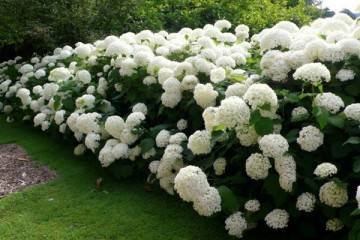Garden hydrangea - planting and care in the open field in the Urals
Content:
No matter how much you want to grow hydrangeas of the Mirage variety in the Urals, you have to put up with their low frost resistance. However, you can propagate other shrubs of this species on your site. One has only to choose the right more frost-resistant varieties.
Garden hydrangea - planting and care in the open field in the Urals
Garden hydrangea has high decorative properties, and therefore is often used in landscape design. Beautiful flowers that exude a pleasant aroma deserve heavy maintenance, but many varieties are unpretentious, which is why gardeners love them.
History of origin and description of garden hydrangeas
The homeland of the shrub is the island of Mauritius, located in the tropics. Conditions in the Urals are not suitable for this shrub. However, if you choose the right planting date, you will be able to save the hydrangea in winter frosts.
Plant flower description
The shrub has a wide variety of flower shades: from white to deep blue, purple and pink. Small flowers form large inflorescences, which, depending on the variety, can be of different shapes: cone-shaped, spherical, umbrella or panicle.
Paniculata varieties for breeding in the Ural climate
Not all varieties are suitable for growing in such conditions, and therefore gardeners often have a question about which hydrangea is better to plant in the Urals. It is worth choosing winter-hardy options.
Darts Little Dot (Dart's Little-Dot)
Compact shrub, the height of which does not exceed one and a half meters. White flowers are collected in flat inflorescences, as they fade, they acquire a light pink hue. The variety is considered winter-hardy, since it can withstand frosts down to -29 ° C without shelter. However, in the conditions of the Ural winter, it is also worth sheltering. The egg-shaped leaves have a two-color color: on top they are light green dull in color, below they are grayish.
Kyushu
A shrub with a rounded crown, the diameter of which can reach from 2 to 3 m. Differs in long flowering from mid-summer to late autumn. Ovate leaves can be up to 12 cm long, slightly pubescent. Flowers are collected in pyramidal inflorescences that can reach 25 cm in length. Four-petal flowers tend to fall early.
Vanille Fraise
The name of the shrub describes the appearance of the inflorescences and recalls the favorite French dessert - strawberries with cream. Flowers at the beginning of flowering are milky white, which later turns into crimson. The dark red branches can turn brown with age. The shrub blooms from June to September.
The panicle hydrangea of this variety can reach a height of 2 meters, but at the same time, due to low-branched shoots, it does not require a garter.Withstands cold snaps down to -35 ° C, but it is also recommended to cover it for the winter, since young branches can freeze slightly.
Unique
Unique is a hydrangea, the cultivation of which will not cause great difficulties in the Urals. The shrub has a spherical shape, in height and diameter can reach 2.5 m. Often its cut inflorescences are used as dried flowers. The plant's winter hardiness is high - temperatures up to -32-35 degrees Celsius are not afraid of it. It blooms from June to October, accompanied by a pleasant aroma.
Tree varieties for cultivation in the Ural climate
Not only panicle hydrangea can grow in the Urals, but also tree-like. It is not more difficult to grow it, many varieties are quite unpretentious in care, but in the fall, shelter for the winter may be required, despite the high winter hardiness. But the cultivation of large-leaved hydrangea in the Urals is not recommended, since most of the varieties will not be able to exist here.
Annabelle
The unpretentious variety of tree hydrangea Annabelle will delight gardeners with long-term preservation of decorative properties - beautiful large leaves will remain dark green until late autumn. White spherical inflorescences reach 30 cm in diameter. The bush itself does not exceed 1.5 m in height.
Sterliss
The winter-hardy variety Sterliss is distinguished by abundant and beautiful flowering, which lasts until October. Can withstand temperatures as low as -30 ° C. The bush is compact - up to 1.5 meters in height. Spherical inflorescences are collected from small flowers, which, when blooming, are light green, but become snow-white as the shrub develops.
Hayes Starburst
Miniature shrub in height does not exceed 1 meter. On thin graceful branches there are terry white inflorescences, which at the beginning of flowering have a greenish tint. Once fully expanded, the flowers turn crystal white. Flowering is short and lasts until September. Differs in high frost resistance - up to -35 ° C.
Garden hydrangea: planting and care in the open field in the Urals
Transplanting after purchase requires some knowledge. The weather conditions in the Urals are not the most suitable for this plant, but if the above recommendations are followed, it will bloom.
What is needed for landing
First of all, it is worth choosing the right time for planting. Most often, disembarkation is made at the end of spring. It is worth making sure that the earth has time to completely warm up, and the night frosts are over.
It is worth preparing the substrate for planting in advance. You can achieve acidified soil with peat. You also need to add sand, humus, coniferous and leafy soil. The components are needed in equal proportions.
How to choose the best place
It is necessary to choose the right location when planting paniculate hydrangea in open ground in the Urals, and caring for it in this case will not cause problems. It must meet three main factors:
- illumination;
- soil moisture;
- protection from the wind.
Summer weather is not bad everywhere in the Urals, there are regions with a sufficiently high temperature, which should be taken into account when choosing a place. The shrub does not like the sun's rays on the leaves and inflorescences, and therefore it is worth protecting the plant from them at noon.
The landing site should not be in a draft. Strong gusts of wind can break the thin, graceful branches of the plant.In addition, this will slow down the growth of the hydrangea, flowering may be postponed to a later period, due to which its duration will be short.
Constant moisture in the soil can both help a plant grow and destroy it. You should not plant a shrub in a wetland, as this will cause the roots to rot. However, dry soil is also undesirable, but in this case the gardener will be able to regulate the moisture with the frequency of watering.
Despite the unpretentiousness of many varieties of hydrangeas, certain conditions for the quality of the soil must be observed. The easiest way is to grow a shrub on slightly acidic soil. Considering the composition of the soil in the Urals, it is worth adding a certain amount of peat to the substrate when planting in order to increase its acidity.
Step-by-step planting process
A properly planted plant adapts faster, and therefore it is necessary to follow the step-by-step instructions:
- Dig a hole with a depth and diameter of half a meter, regardless of the size of the seedling.
- Pour 3 buckets of water. Leave for a day.
- Lay sand or gravel at the bottom as drainage, then fill it by a third with a prepared nutrient substrate.
- It is worth planting a seedling in such a way that the root collar is at ground level.
- Fill in the remaining soil, crush, water.
It is recommended to mulch the bushes with peat and sawdust, which, after decay, will become a good fertilizer.
Reproduction
Reproduction is easiest done by cutting the plant. Hydrangea flowers are often sterile, and therefore the seeds can only be bought at the store. In addition, sowing is a rather long and laborious process, which will greatly slow down the receipt of new bushes in your area. However, it is worth choosing a method of plant breeding according to your preferences, having weighed all the pros and cons in advance.
Propagation by cuttings
Cuttings need to be cut in mid-June, rooted in the substrate under the film. A rooting stimulant will speed up the process. It is recommended to grow seedlings in pots for 2 years and then transplant them into open ground.
Growing from seeds
Growing from seeds is required at home. To do this, prepare in advance a deep box in which rooting will be carried out. It must be filled with a substrate, the layer of which should not reach the edges of the sides of 3-4 cm. Spread seeds over the soil without deepening, and then sprinkle with soil, spray from a spray bottle and cover with glass.
Care
You will have to take care of the plant carefully, since growing a hydrangea in a garden in the Urals is not as easy as it might seem at first glance. Even frost-resistant varieties are recommended to be covered for the winter. But in other seasons you will not have to sit idly by.
Watering mode
Hydrangea care depends on the Ural weather. If it rains often, because of which the earth is always moist, you should not water the plants. However, if it turned out to be a dry and hot summer, which happens quite often in this area, then as the soil dries out, the bushes need to be moistened.
Top dressing
Top dressing is essential for flowering and plant growth. It is worth acidifying the soil twice a season. For this purpose, you can use milk whey, lemon juice.
Features of care during the flowering period
At the beginning of summer, it is worth starting to feed with fertilizers containing nitrogen so that the bush grows leaves and prepares for flowering. From the middle of summer, it is necessary to add phosphorus and potassium to support the blossoming inflorescences.
Features of care during the rest period
During the dormant period, the plant does not require additional care. In winter, you just need to organize a shelter for the hydrangea so that it will survive the Ural winter.
Preparing for the Ural winter
Each variety of garden hydrangea has its own temperature ranges at which it can spend the winter calmly.Depending on this, it is worth choosing when to start preparing for the winter. This usually happens before the first frost.
It is necessary to carry out autumn pruning, which consists in removing weak shoots, as well as cutting off all leaves, except for the top ones. After that, it is worth pulling the branches together and tying them with a rope, and then wrap them with covering material. Then it is necessary to bend the bush to the ground and fix it in this position, covering it with sawdust on top and covering it with spruce branches.
If you do not want to bend the bush or there is no place for this next to it, you should build a frame made of metal, fill it with dry leaves, sawdust, and cover it with a film on top.
In the spring, you need to start opening the plant. At first, this should be done gradually: the plant should not melt into a thaw, but it can die from night frosts if you open it early. Spring warming means the need to remove the film only for a few hours, but only after the end of the frost is it worth removing it altogether.
Even in the Urals, you can decorate your personal plot. However, the plants in this case need special care. It is also worth choosing them carefully - not everyone will suit this role.
